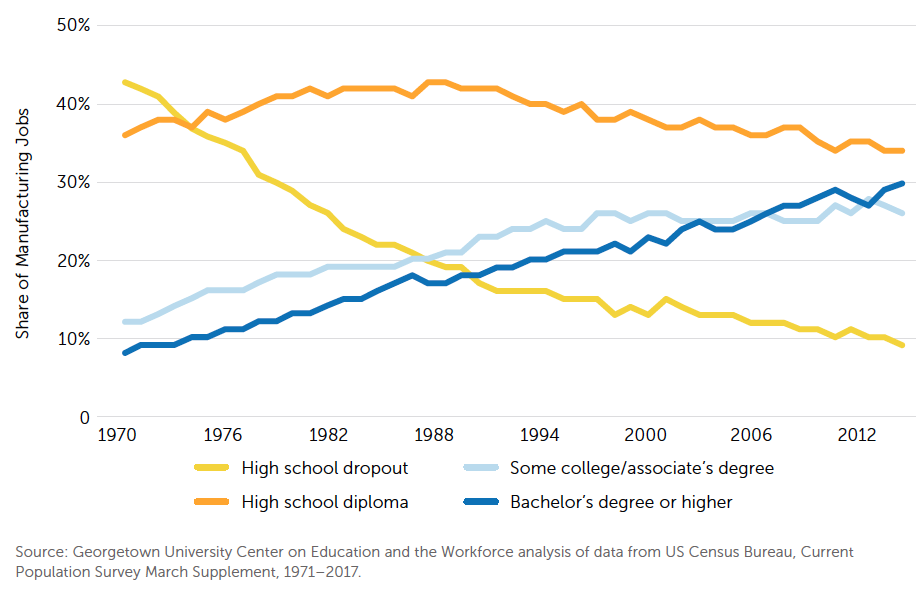The case for college, part 3: OK, but what about our regional manufacturing economy?

Gentle readers, this is the third and final installment of my unabashedly nerdy series on the case for college. (See the two prior blogs here and here). As a college president, I am passionate about this stuff! And I promise to get back to more lyrical content soon.
I want to bring the case for college home to Hoosiers. Indiana and Wisconsin are the only two states in the nation where manufacturing remains the leading sector. And this is particularly true for our locale: in our three-county region in 2018, more than one in three jobs (35%) were in the manufacturing sector, 3.4 times the national average.
While the economy ahead is uncertain, lately our manufacturing economy has been booming. As of August 2019, there was no single county in Indiana with an unemployment rate higher than 4.7%, and the rate in Elkhart County was 3.0%. Employers are competing fiercely for workers. Local manufacturers are recruiting future workers in our middle schools with messages that high-wage jobs can be gained right out of high school.
The very low unemployment figures in Indiana make the time and financial investment in a college education harder for some students and their families to accept. The opportunity costs are very real!
So how do we make the case for college in this economy?
- First, we must accept that for some students and families, the present wage economy is too good to pass up. College might be the right choice after one or more years of work.
- Second, we must communicate that most high-wage manufacturing jobs now require at least some college education. As shown in the figure below, the proportion of college educated workers in manufacturing (blue lines in the figure) has climbed steadily and now exceeds those with no education beyond high school.

- Third, as manufacturers look to robots, the trend toward college education will continue. The sector will need fewer people with more complex skills — people who bring critical thinking and creative problem solving to a changing sector. This is what a liberal arts degree does best: provide depth as well as breadth and the capacity to transfer ideas between settings and across disciplines.
- Fourth, we must partner with regional employers to educate their employees in ways that are more flexible than our traditional full-time, four-year pathway. That traditional pathway is our core mission, but it has never been our sole mission. And in our current economy, we need to become even more flexible and learner-centered.
- Finally, we must communicate the liberating personal and economic value of a Goshen College education. College will continue to be an excellent value for young adults, and also for those with work experience who want to gain the broad and deep skills to navigate the dynamic world of work over the course of a career.
A Goshen College education provides the foundation for a lifetime of meaningful career, leadership and service — including in manufacturing!
Rebecca Stoltzfus




